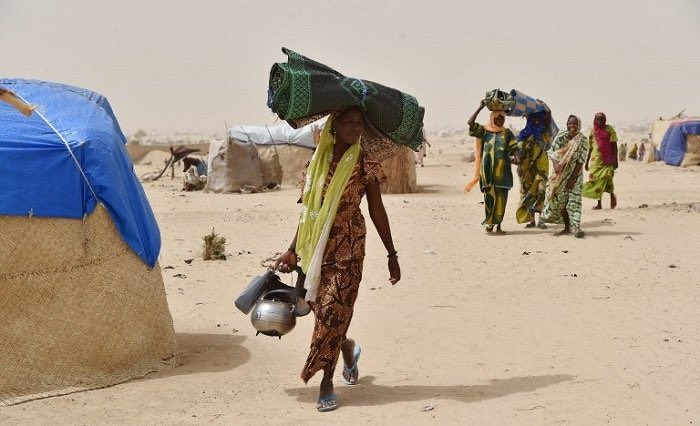
Joeri Rogelj
LONDON, JUNE 5 – The world is burning, and our political leaders are failing us. With temperatures rising at an alarming rate, it seems that anyone who believes it is still possible to limit global warming to 1.5° Celsius is in a rapidly shrinking minority.
As governments around the world fail to meet their responsibilities under the Paris climate agreement, the window for keeping global temperatures below the 1.5°C limit has all but closed due to insufficient action. But while some eminent commentators have declared the 1.5°C target “deader than a doornail,” I have come to the opposite conclusion: 1.5°C will never die.
To be sure, the world is in a dire state. Greenhouse-gas (GHG) emissions dumped in the atmosphere since the start of the Industrial Revolution have already warmed the planet by roughly 1.3°C, according to this year’s annual report on Indicators of Global Climate Change. And studies, including mine, unequivocally show that crucial climate goals are not being met. Under current policies, global temperatures are projected to increase by 2.5-3°C by the end of this century.
Even if governments meet all their existing climate pledges, the odds against global warming staying below 1.5°C are seven to one. Combine this with the fossil-fuel industry’s delaying tactics, including the greenwashing of their polluting business practices and recent roll-back on self-imposed emissions targets, and it becomes abundantly clear that our chances of staying below 1.5°C are indeed slim. Consequently, climate scientists expect global warming to “blast past” the 1.5°C limit.
But just as risks do not vanish when safety limits are exceeded, the Paris agreement’s climate commitments do not disappear once we cross 1.5°C. While 1.5°C is a political target, it was not pulled out of thin air. It is a scientifically informed limit, first championed by small island states and later supported by a broad coalition of ambitious countries.
By now, it is clear to many governments that allowing global warming to exceed 1.5°C involves unacceptable societal risks, undermines development, and poses an existential threat to vulnerable communities and their cultures. Moreover, the line between “safe” and “dangerous” warming is becoming increasingly blurred. As the devastating effects of climate change worldwide show, even 1.5°C is dangerous and our societies are ill-equipped to handle it.
Over the past 20 years, we have experienced what a world that has warmed by about 1°C is like. No region has been spared the impact, with a growing number of countries facing fires, floods, and storms, resulting in devastating human and financial costs that extend well beyond national borders. Between 2000 and 2019, climate-related disasters claimed over half a million lives, caused over $2 trillion in estimated damage, and affected almost four billion people worldwide.
Even at 1.5°C warming, up to one in seven speciesface extinction, critical ecosystems like tropical coral reefs face destruction, and extreme heat waves that our great-grandparents experienced once in a lifetime will occur on average every six years. Centuries of ice melt will cause sea levels to rise, flooding major cities like London, New York, Shanghai, and Kolkata. Vulnerable and marginalized communities’ efforts to escape poverty will be undermined, and every country’s economic development will be impeded.
Limiting global warming is thus a matter of social justice, human rights, and long-term development, and this imperative remains even if we cross the 1.5°C threshold. Moreover, while exceeding 1.5°C will have unpredictable political consequences as compensation claims for avoidable climate-related damage increase, the political implications of reducing GHG emissions remain consistent with what the Paris agreement already outlines.
To halt global warming, the Paris agreement expects countries to implement emission-reduction plans that represent their “highest possible ambition.” While governments are failing to meet this goal, exceeding 1.5°C does not change their responsibilities; in fact, fulfilling these commitments will become more important as temperatures continue to rise. The only way to improve our chances of keeping warming close to 1.5°C is by pledging and implementing more ambitious near-term emission cuts every year until 2035.
Even if we cannot avoid overshooting 1.5°C, the 1.5°C target remains relevant. Every fraction of a degree counts, and global climate efforts must therefore focus on limiting the exceedance of 1.5°C and returning to safe levels as quickly as possible. The Paris agreement’s target of achieving global net-zero GHG emissions, in particular, could help reverse some of the excess warming. To maintain a safe, livable, and just planet, we must keep our eyes on the 1.5°C limit and ensure that pursuing it remains our top priority.
Joeri Rogelj, Professor of Climate Science and Policy and Director of Research at the Grantham Institute for Climate Change and the Environment at Imperial College London, is a lead author of reports of the Intergovernmental Panel on Climate Change and the United Nations Environment Programme.
Copyright: Project Syndicate, 2024.
www.project-syndicate.org














